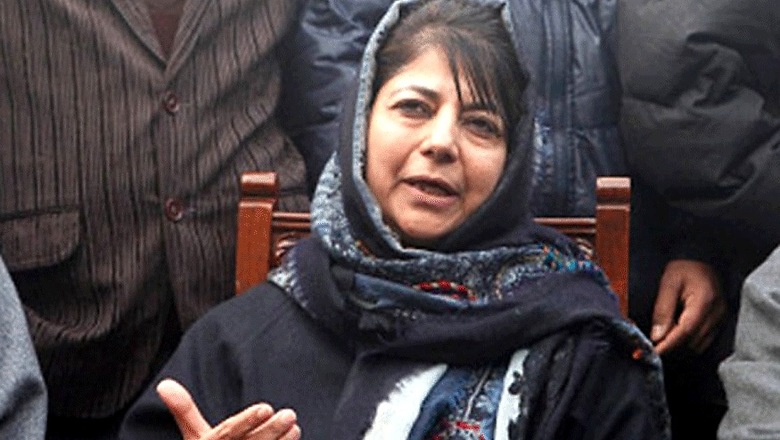
views
What next after the terrible assault on Hindu pilgrims travelling on the Amarnath Yatra in Jammu and Kashmir? This is not the first attack on the Amarnath Yatra, but it is the first in a long time and the first since the BJP government took office in 2014. It is also the first since the violent uprising in 2016, following the killing of the terrorist Burhan Wani.
The summer of 2017 was awaited with some trepidation, especially following the experience of the previous year. As expected, there has been a surge in attacks after Eid and after the holiday season in north India, which contributes to the tourism economy in the Kashmir Valley. Between now and the winter snows, India should prepare for a grim and bitter battle.
The recent Amarnath Yatra attack has been traced by intelligence agencies to actors beyond the Line of Control, but it could have as easily been carried out by the radical Islamists who have hijacked Valley activism. Old school separatists such as the various leaders of the Hurriyat recognise that the attack on the Amarnath Yatra — traditionally undertaken by Hindus, but with logistical support by and economic benefit for Kashmiri Muslims — is far from advisable.
The gunning down of innocent, defenceless pilgrims by religious terrorists is scarcely going to inspire international support for the “Kashmiri cause”. Indeed, it could do just the opposite. It will probably give Indian security forces the cover and the excuse to take even harsher measures to crack down on terrorism in Kashmir. Already, this year, as opposed to 2016, has seen a more expansive hunting down and ruthless elimination of militant modules.
Unfortunate as it sounds, one cannot see an interruption. The Amarnath Yatra will only redouble security forces’ efforts. The Hurriyat, for all the media statements it makes, is less and less relevant to controlling the narrative on the street. As for “talks with the politically disaffected”, while such counsel to the Union government sounds reasonable, it remains unclear who will be the interlocutors for any meaningful talks – and whether those with AK-47s want a conversation in the first place.
In New Delhi, the mood is one of containment and accretion, it is not one of imaginative (and imaginary) talks. The conditions on the ground and in the wider region don’t allow for politically adventurist approaches. The response to the Amarnath Yatra atrocity will have to be quick and brutal and publicly visible – nothing less. In a time when Kashmiri police officers, part of the security detail of a Hurriyat politician, are lynched outside a mosque, one cannot expect otherwise. This is the summer of the iron fist; the velvet glove must wait for its moment.
There is no doubt that the PDP-BJP government has failed to deliver as was hoped. In tying up with the BJP, the PDP lost some of its credibility with the separatist constituency and its political responses let the narrative slip out of its hands. The BJP is conscious that expectations its voters in Jammu have of it are unrealistically high. Functionaries in the national capital say Chief Minister Mehbooba Mufti is well-meaning but ineffectual. The obvious question is: how long will her government survive?
Frankly, it may survive longer than many believe. There is no obvious alternative to it. Conditions in Jammu and Kashmir are not ripe for another assembly election. A prolonged spell of governor’s rule – in effect rule by the Union government – could always be an option. Yet, there is a public relations cost to it and to not having even a notionally representative government.
That is why one suspects the Narendra Modi government will carry on with the coalition experiment in Srinagar till it is absolutely impossible to do so. In any case, if security goals – targeting and finishing terrorists – are being met with the state government in place, the need to remove it is not entirely clear.
Yes, the state government is not delivering on several day-to-day issues. For instance, the security arrangements for the Amarnath Yatra are usually extremely stringent. Nevertheless one tourist bus was allowed to deviate from a protected convoy and carry out a lonely night-time journey. Obviously, somebody made a big and fatal mistake.
What Jammu and Kashmir needs is a younger and more energetic governor, who can attempt to fill the gaps that the state government is leaving behind and can coordinate with security agencies. As chair of the Amarnath Shrine Board, he can take oversight responsibility for the Yatra. These are all tasks that previous governors have undertaken.
The current governor, N.N. Vohra, is an upstanding civil servant but he is ageing. In 2016, at the height of the Burhan Wani episode, he was in the United States for medical treatment. Vohra’s term actually ended in 2013 and the Manmohan Singh government let him stay on, taking the honourable position that the new government, that came to office in 2014, should have the right to formulate its own Kashmir policy and appoint its own governor.
Since May 2014, there has been much speculation on Jammu and Kashmir’s new governor and many names have been discussed. Astonishingly, no decision has been taken by the BJP-led government in New Delhi. After this week’s events, no further delays can be explained.
The author is distinguished fellow, Observer Research Foundation. He can be reached at [email protected]
















Comments
0 comment